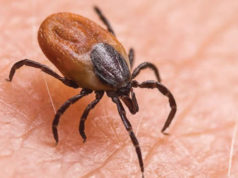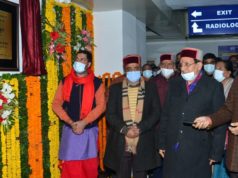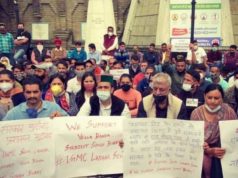Shimla: Thirty-five people have tested positive for scrub typhus at Indira Gandhi Medical College and Hospital (IGMC). “We have so far tested 297 samples for scrub typhus. Out of these, 35 have tested positive,” said Dr. Praveen Bhatia, Deputy Medical Superintendent. He added, “At the IGMC, around 300 scrub typhus patients are treated every year, with most cases reported between June and October.”
Scrub typhus, also known as tsutsugamushi disease, is a serious illness caused by the bacteria Orientia tsutsugamushi, which is transmitted by the bite of an infected chigger (larval mite). The disease is prevalent in rural areas of Southeast Asia, the Pacific islands, and northern Australia. In India, it has become a significant public health concern, especially during the monsoon season when the mite population increases.
Disease and Transmission
The bacteria responsible for scrub typhus are typically found in areas with dense vegetation and grasslands, where the mites thrive. People working in fields, such as farmers and agricultural labourers, are at high risk of contracting the disease. Symptoms of scrub typhus usually appear within 10 days of the mite bite and include fever, headache, body aches, and sometimes a rash. A characteristic feature of the disease is the presence of an eschar, a dark, scab-like mark at the site of the chigger bite.
Clinical Manifestations, Diagnosis and Treatment
In addition to fever and rash, patients may experience lymphadenopathy (swollen lymph nodes), hepatosplenomegaly (enlargement of the liver and spleen), and gastrointestinal symptoms such as nausea and vomiting. Severe cases can lead to complications like pneumonia, meningitis, myocarditis, and acute respiratory distress syndrome (ARDS). Without timely treatment, the mortality rate can be as high as 30%.
Diagnosis of scrub typhus is primarily based on clinical symptoms and confirmed through laboratory tests such as serology and polymerase chain reaction (PCR). Early diagnosis is crucial for effective treatment. The standard treatment for scrub typhus involves antibiotics like doxycycline or azithromycin, which are highly effective if administered early in the course of the disease.
Prevention and Precautionary Measures
Dr. Bhatia emphasized the importance of preventive measures while working in fields during the monsoons. “People should wear gumboots, gloves, and full-sleeve clothes. They should take a bath and change clothes after returning home,” he advised. Additionally, applying insect repellent to exposed skin and clothing can help reduce the risk of mite bites. Maintaining personal hygiene and avoiding sitting or lying on bare ground are also effective preventive strategies.
Last year, at least 10 people died from scrub typhus, with four deaths each recorded in the Shimla and Solan districts. These statistics highlight the severity of the disease and the urgent need for awareness and preventive actions. Dr. Bhatia stressed the importance of seeking medical attention if one develops a fever while working in the fields. “People should rush to a nearby health facility and immediately take the required medicines,” he advised.
Recent research indicates that early diagnosis and treatment with antibiotics can significantly reduce the mortality rate of scrub typhus. Public health campaigns are crucial in educating at-risk populations about the signs and symptoms of the disease, preventive measures, and the importance of timely medical intervention.
The current outbreak of scrub typhus at IGMC underscores the need for continued vigilance and proactive measures to combat this seasonal threat. By adhering to recommended safety practices and seeking prompt medical care, the risk of severe illness and fatalities can be mitigated.










